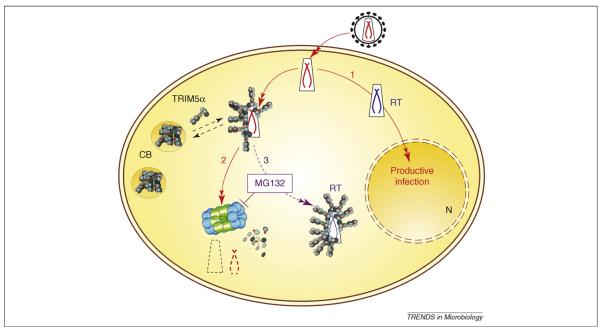Figure 3.
Summary of the antiviral activity of TRIM5α. During unrestricted, productive infection, the retrovirus enters the cell, synthesises DNA by reverse transcription and enters the nucleus (N) where it integrates into a host chromosome (1). TRIM5α is found in dynamic structure in the cytoplasm called cytoplasmic bodies (CB) [64]. If sensitive incoming virions encounter TRIM5α they are rapidly recruited to the proteasome and degraded (2). If the proteasome is inhibited by MG132, then the virus does not get degraded but the TRIM5α-associated virus remains uninfectious (3) [63].

